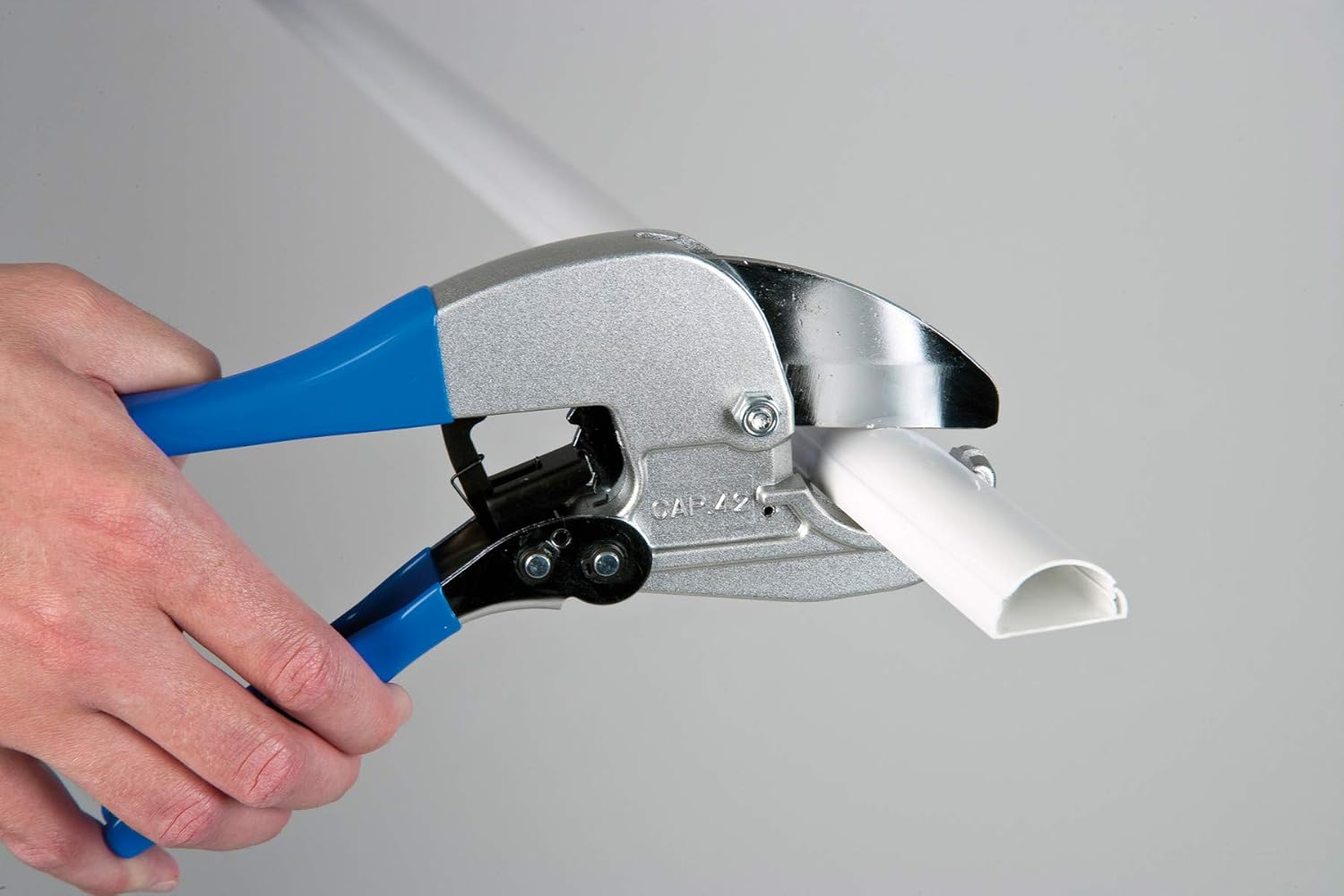About this deal
Skirting trunking, also known as wall skirting trunking, is a type of cable management solution used to conceal and protect cables along the base of walls. It serves a dual purpose, enhancing both aesthetics and functionality. This type of trunking is prevalent in commercial and residential spaces, offering a neat and organized way to route cables without compromising the interior design. Choosing the right size of slotted finger trunking depends on the number and size of cables you need to manage. Measure the cables' diameter and add some extra space for future additions. Using your measurements, cut the skirting trunking sections to the appropriate lengths. Ensure clean and precise cuts for a professional finish. Depending on the trunking type, cable conduit size, cross-sectional area, amounts of cable and install location, you may need several additional tools to complete the installation. These can range from screwdrivers and drills to saws, putties and sealants, stud finders (wall scanners), and various others besides. A: Yes, skirting trunking can be painted to blend seamlessly with the wall colour. Use paint suitable for plastic materials. A: Skirting trunking is designed for indoor use. For outdoor cable management, consider using weather-resistant alternatives.
A: It's recommended to install skirting trunking on smooth and even surfaces for a secure fit. Uneven walls may require additional preparation. If you need power for your shed, or any other type of outbuilding, then you’ll need for it to be connected to the mains via an SWA cable. This stands for “steel wire armoured” cable and is ideal for the job as it’s waterproof and not prone to rotting. It can also be positioned underground, keeping your children and pets safe. First, work out a 90 degree right angle at the point of the Trunking you want to cut. Then find the middle point of that and mark it on your Trunking. Draw a triangle between the top point of the angle and the 45 degree points either side. Use cable clips at regular intervals to secure and organize the cables inside the trunking. This prevents tangling and ensures easy maintenance.Consider the type of cables you're dealing with. Are they power cables, data cables, or a mix of both? Some trunking systems offer compartments to segregate different cable types, ensuring proper organization and reducing the risk of interference. Before you begin the installation process, it's essential to ensure you have all the required tools and materials. Here's a list to help you get started: Before you begin the installation process, gathering the necessary tools and materials is important. Here's a list of items you'll need: Yes, you can paint slotted finger trunking to match the wall colour. Make sure to use paint suitable for plastic materials.
A: Use a damp cloth to wipe down the trunking and remove dirt or stains. Avoid abrasive cleaning agents. The toggles are ideal to keep the cables away from the trough area under the top-lid. But ensure they are pushed down, and secure on selected pillars in the cable cavity.Getting Started Before you start the installation process, gathering all the necessary tools and materials is essential. Here's what you'll need: When choosing skirting trunking, several factors come into play to ensure a seamless fit with your installation requirements. If using Clip-Over bends and tees accessories, the gaps do not have to be precise; but ensure the lengths are spaced so the rear tabs will grip i.e. the lengths are not too far apart! Then it is easy to attach the corner bends or tee accessory. Any tips for cutting D-Line Trunking lengths? Your way: You still have to make the spacer, you still have to cut holes in it to match the holes in the enclosure, you've MORE work to do to fix it since many materials will sag and open up a gap (IP4x gone) if not fixed as close intervals, and then you have to fix two short pieces of trunking on an uneven wall that's a PITA to fix things to (no, you really can't drill drill a hole and pop a plastic plug in) and make sure you get them aligned. There are nine key stages involved in running the cable, which we will cover in more detail below. It’s worth highlighting at this stage that this is very complicated work and if you’re not familiar with electrics there is a real risk of harming yourself or others.
Finishing Touches Cover the Trunking Once the cables are in place, you can snap on the trunking cover. This will conceal the cables and give your installation a clean and professional look. Before finalizing the installation, it's essential to test the cables and connections to ensure they function correctly. This step will save you from potential issues down the line.Conduit is typically the cheaper and more basic approach to wiring protection. It’s widely used wherever smaller cable bundles or individual wires are being run between two terminals, from point A to point B. If they simply need to be protected, tidied up, and/or hidden from view, conduit is often the easiest option. Choosing the right size of Trunking comes down to two main things: the amount of cables you need to store, and the amount of space those cables will take up. If you put too many cables in Trunking, you risk overheating them when the power is switched on, potentially blowing your fuses or causing a fire. If you're installing the trunking to manage cables, carefully route the cables through the trunking. Use cable clips to keep the cables organized and prevent tangling.
 Great Deal
Great Deal 